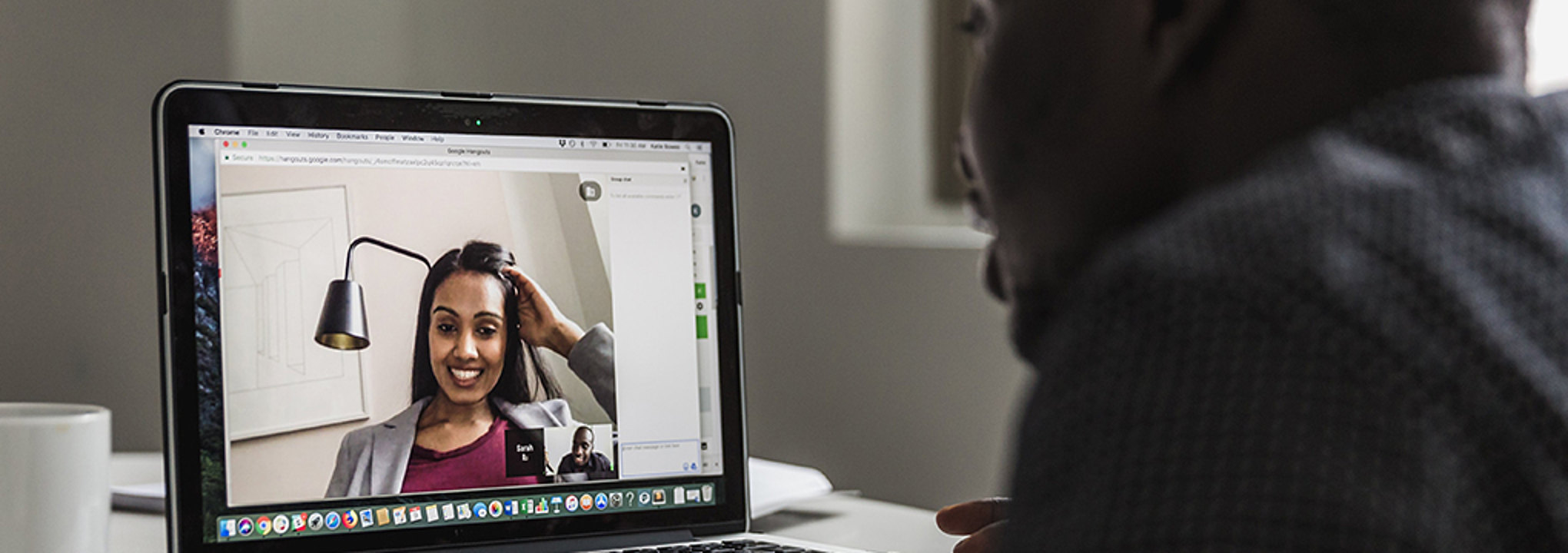On Our Minds

By Omar Lopez (he/him)
As many of us adjust our work lives to this strange new world caused by the novel coronavirus pandemic, some aspects can feel particularly challenging. This is especially true for those involved in a job interview process—on both sides of the table. Hiring managers and candidates alike may be wary about moving what’s usually an in-person process to a virtual one. But fear not. We’ve got some tips for how to successfully present yourself and evaluate one another in cyberspace.
Getting set up—for both sides:
- Prepare your setup ahead of time: Take time before the interview to check the background and light source of your interview space, so that you can see and be seen. Test out any technology you’ll be using, and prepare backup technology if you have it. (If you’re using videoconference technology for the first time, several tools including Zoom, Microsoft Teams, and Cisco Webex are currently offering free trials.) Make sure your camera, whether it's built into your computer or a separate device, is in a place where your face is prominent and fills up most of the screen.
- Have additional contact information on hand: Exchange phone numbers, email addresses, and any other contact information before conducting the interview. That way, whether your video camera malfunctions or someone is unable to hear, you have alternative ways to get in touch.
Hiring manager / interviewer tips:
- Schedule the interview with a time buffer: Sometimes, meetings—including interviews—run over their expected end time. When scheduling the interview, try to build in at least 15 minutes before and after the conversation. That flexibility can allow you to prepare what you need and manage your workload accordingly, in case something goes a little longer than planned.
- Build in relationship-building: A benefit to in-person interviews is the “get to know you” time you can have with a candidate before or after of the interview, when you're giving them a quick tour of the office or escorting them out afterwards. Try to build in time for those types of conversations to happen virtually, whether that means asking specific questions or using that time buffer to chat freely.
- Plan out your roles and actions—and clarify them with the candidate: Whether you’re conducting the interview alone or with other people, determine how you’ll jump between asking questions and taking notes. Will you hand-write notes, or type on your laptop? Will you mute your audio between questions, or not? If you’re interviewing with a coworker, who will ask questions and who will take notes? Once you iron out these kinds of details, share them with the candidate so they know how to direct their responses.
- Create shared resources for discussions and feedback: If you’re holding a group interview, set up a group chat with all the team members involved to share necessary communication without distracting the candidate—like giving a 5-minute warning or reminding the person talking to ask a certain question. Similarly, create a shared document (e.g. Google Docs) for the team to take notes, so all feedback is in one place.
- Prioritize core competencies and core values throughout the conversation: Not every candidate may feel at ease interviewing virtually or over the phone. But don’t let that cloud your assessment. As you evaluate candidates, think about the core competencies they need to succeed in this role, and the core values they should demonstrate to thrive at your organization. Then focus on how the candidate measures up to those skills and values, as opposed to how they came across over video chat.
Candidate / interviewee tips:
- Dress (fully) for the interview: Even though people can only see you from the waist up, fully dressing for the virtual interview as you would for an in-person interview will help you get in the right mindset. Make sure your outfit fits the appropriate formality of the role or organization.
- Ask the recruiter to test your technology with you: Oftentimes, the recruiter (or whomever is your main contact) is also the one setting up the technology being used for the interview. Use this to your advantage and ask if you can set aside 5 to 10 minutes on the morning of the interview to test it out with them. This can give you the opportunity to ask any final questions about what to expect in the interview.
- Practice the full virtual interview ahead of time: If you don’t feel as comfortable having a virtual interview—whether you’re concerned about the technology, being at home, or not coming across as authentically as in person— practice it with a friend or family member to try and ease those tensions. Going through the motions ahead of time will give you the chance to find the best place at home to have the conversation, work out any technological kinks, and refine your answers to potential interview questions.
The Takeaway:
Whether you’re the hiring manager or candidate, implementing these tips can set your interview up for success. But even with all that preparation, it’s possible that some hiccups will occur. That’s why it’s especially important to give yourself—and the other person—some grace. Everyone understands that this is an unusual time, and that working from home is going to take some getting used to. Remember: the goal of an interview, whether virtual or in person, is for each party to get the information they need to decide whether this role is a good fit or not. So if the hiring manager’s dog starts barking or the candidate’s roommate suddenly appears in the background, try not to sweat it.





